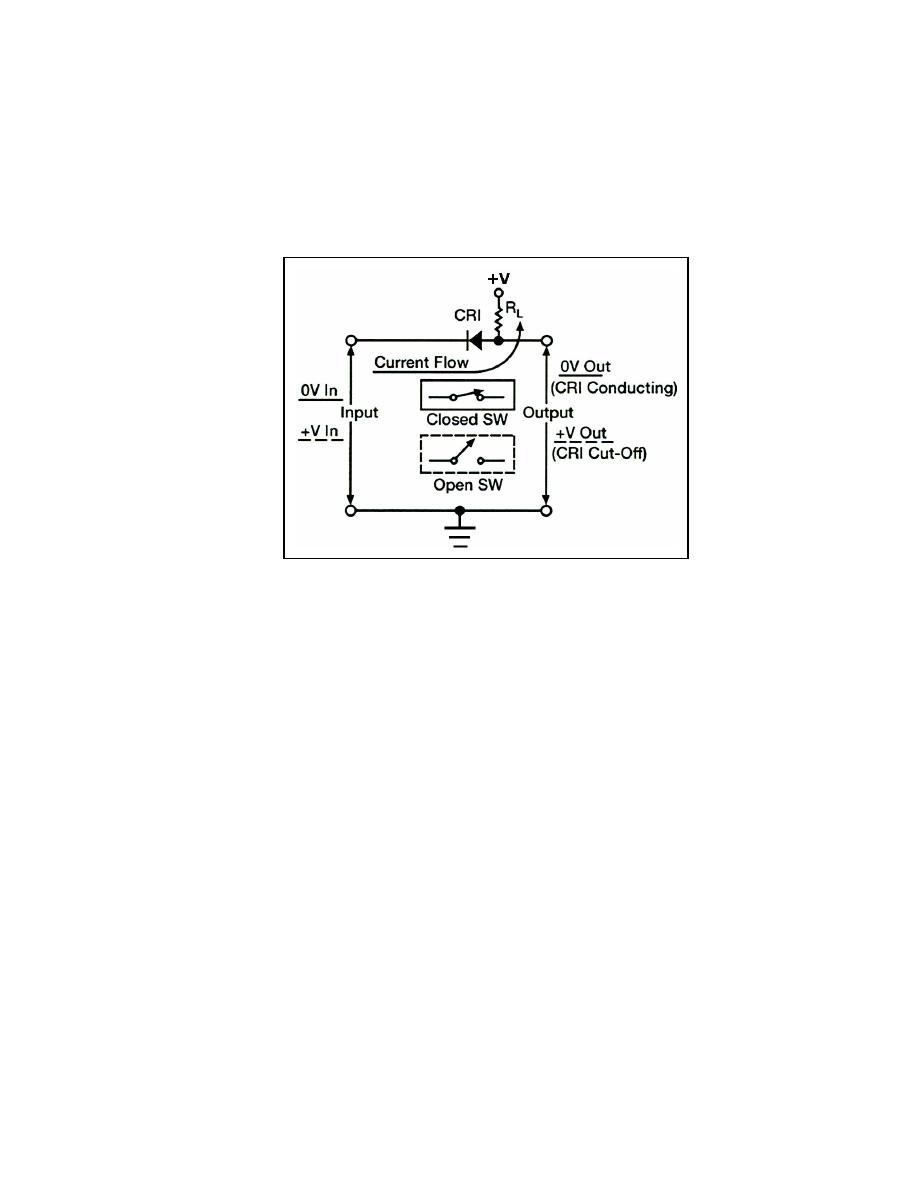
_________________________________________________________________ Semiconductor Diodes
Diode Switch
1-88. In addition to their use as simple rectifiers, diodes are also used in circuits that mix
signals together (mixers), detect the presence of a signal (detector), and act as a switch "to
open or close a circuit." Diodes used in these applications are commonly referred to as
"signal diodes." The simplest application of a signal diode is the basic diode switch (see
Figure 1-24).
Figure 1-24. Basic Diode Switch
1-89. When the input to this circuit is at zero potential, the diode is forward biased
because of the zero potential on the cathode and the positive voltage on the anode. In this
condition, the diode conducts and acts as a straight piece of wire because of its very low
forward resistance. In effect, the input is directly coupled to the output resulting in zero
volts across the output terminals. Therefore, the diode acts as a closed switch when its
anode is positive with respect to its cathode.
1-90. Applying a positive input voltage (equal to or greater than the positive voltage
supplied to the anode) to the diode's cathode, the diode will be reverse biased. In this
situation, the diode is cut off and acts as an open switch between the input and output
terminals. So, with no current flow in the circuit, the positive voltage on the diode's anode
will be felt at the output terminal. Therefore, the diode acts as an open switch when it is
reverse biased.
DIODE CHARACTERISTICS
1-91. Semiconductor diodes have properties that enable them to perform many different
electronic functions. Engineers and technicians, in order to do their job, must be supplied
with data on these different types of diodes. The information presented for this purpose is
called DIODE CHARACTERISTICS. Manufacturers supply these characteristics either in
their manuals or on specification sheets (data sheets). Since there are many manufacturers
and diode types, it is not practical to show you a specification sheet and call it typical.
Aside from the differences between manufacturers, a single manufacturer may even supply
specification sheets that differ both in format and content. Despite these differences, certain
performance and design information is normally required.
23 June 2005
TC 9-62
1-27



 Previous Page
Previous Page
